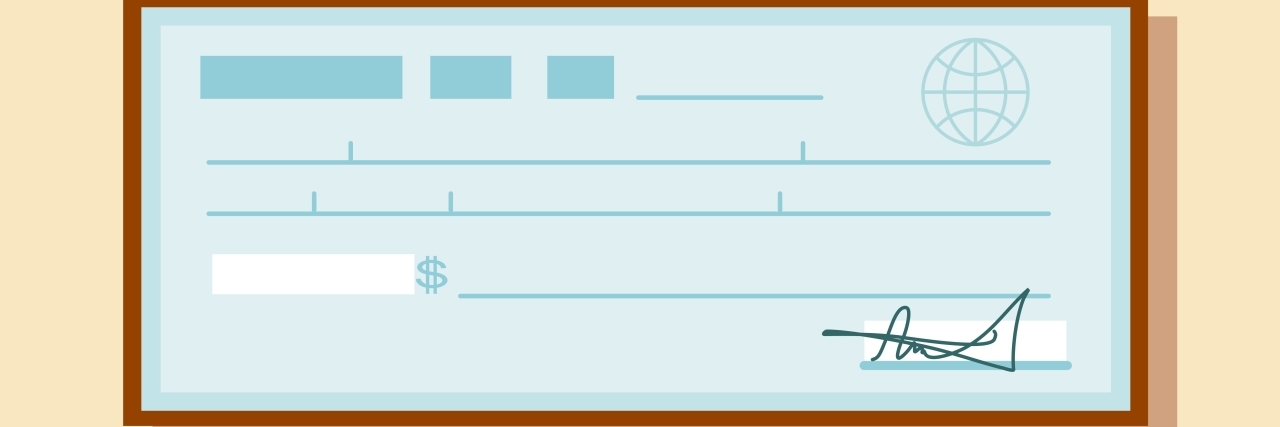What to Expect After the $2.2 Trillion COVID-19 Stimulus Bill Was Signed Into Law
Update on April 15: Stimulus payments have begun to go out to those signed up for direct deposit. The IRS has set up a website where you can check when you will receive your payment. For those who don’t have direct deposit, checks will likely take at least a few weeks to arrive. If you have a delinquent bank loan or past-due fees, your bank may be able to take your stimulus payment, according to The American Prospect.
On Friday, U.S. President Donald Trump signed a $2.2 trillion stimulus relief package, H.R. 748 — Coronavirus Aid, Relief, and Economic Security (CARES) into law, to address the health care and economic concerns facing Americans during the coronavirus outbreak. The House of Representatives passed the bill earlier in the day on Friday, and the Senate passed the bill on Wednesday night with a unanimous 96-0 vote.
The House passed H.R. 748 by voice. @RepThomasMassie asked for a recorded vote.
— House Press Gallery (@HouseDailyPress) March 27, 2020
This relief package, which is one of the most expensive measures passed by Congress, according to CNN, follows nationwide lockdown protocols that have led to more than 3 million workers losing their jobs. Among the bill’s many provisions are relief for the health care system, small businesses and individual Americans.
Who Is Eligible for Payments?
To mitigate the financial hardships caused by the COVID-19 pandemic the stimulus bill includes a one-time payment to people in the U.S. who make less than $99,000 a year ($198,000 for couples). Americans making less than $75,000 a year will receive $1,200. People who file their taxes as a married couple and earn $198,000 or less each year get twice the amount, $2,400. Families get an additional $500 per child.
According to the Washington Post, those who receive Social Security payments (SSI or SSDI) qualify for the $1,200+ payment. An earlier version of the bill said low-income people would get less than $1,200, but it was revised before it was signed into law. You do not need to file a tax return, and the IRS will use your Social Security Administration data (or SSA-1099) to determine your income and process the payment the way you typically receive Social Security payments.
If you earn over $75,000 but less than $99,000 as an individual, you’re also eligible for a check, but the amount decreases by $5 for every $100 over $75,000 you earn. For example, if you earned $80,000 in 2019, you will receive $950. Your check amount will be based on your 2019 or 2018 tax return, whichever you filed most recently.
Now that the bill has passed, Treasury Secretary Steven Mnuchin has 15 days to submit a plan. According to NBC News, Mnuchin said the department plans to start sending the money in the next three weeks. If you’ve used direct deposit to file your taxes in the last two years, the IRS will deposit the money directly. Otherwise, it will mail a check to your last known address.
The IRS will publish additional information about the new forms on its website, according to NBC News. The agency said that people who were not required to file taxes in 2018 and 2019 will have to file a “simple tax return,” which would include basic information like a person’s number of dependents and their bank account information.
“We call them checks in the mail, but most of them will be direct deposits,” Treasury Secretary Steven Mnuchin told CNBC on Thursday. “It will be within three weeks. We’re determined to get money in people’s pockets immediately.”
Student loan payments will also be suspended by the Department of Education until September. For people who have lost their jobs in the wake of the coronavirus, this package provides assistance in applying for unemployment to make it more accessible to employers during this time. It also includes a $600 boost to unemployment payments through July.
What Else Does the Bill Cover?
The CARES Act includes many other provisions to support the economy and health care workers as the country continues to experience fallout from the COVID-19 pandemic. The 880-page relief package also addresses:
- Coverage for the tests for diagnosing coronavirus and the costs for treatment
- Rapid coverage of preventive services and vaccines for coronavirus
- Financial support for Americans based on their financial income
- Expansion of resources for telehealth services and grants for rural hospitals and other medical programs
- Reauthorization of the healthy start program
- Additional manufacturer reporting requirements in response to drug shortages
- Increased support for people who apply for unemployment compensation
- Financial support for small businesses to both keep them in business and incentivize them to keep workers
- Reauthorization of health professions workforce programs
- Nursing workforce development
Services for people on Medicare and Medicaid will both be expanded under this relief package. The Social Security Act will be amended to increase medicare telehealth flexibilities during this emergency period. The government will also pay for “telehealth services that are furnished via telecommunications system by a Federally qualified health center or a rural health 20 clinic” for eligible patients on Medicare.
This deal will also reauthorize the healthy start program by providing more resources to hospitals and other medical systems in communities with “high rates of infant mortality or poor perinatal outcomes.”
Concerned about coronavirus? Stay informed with these articles:

